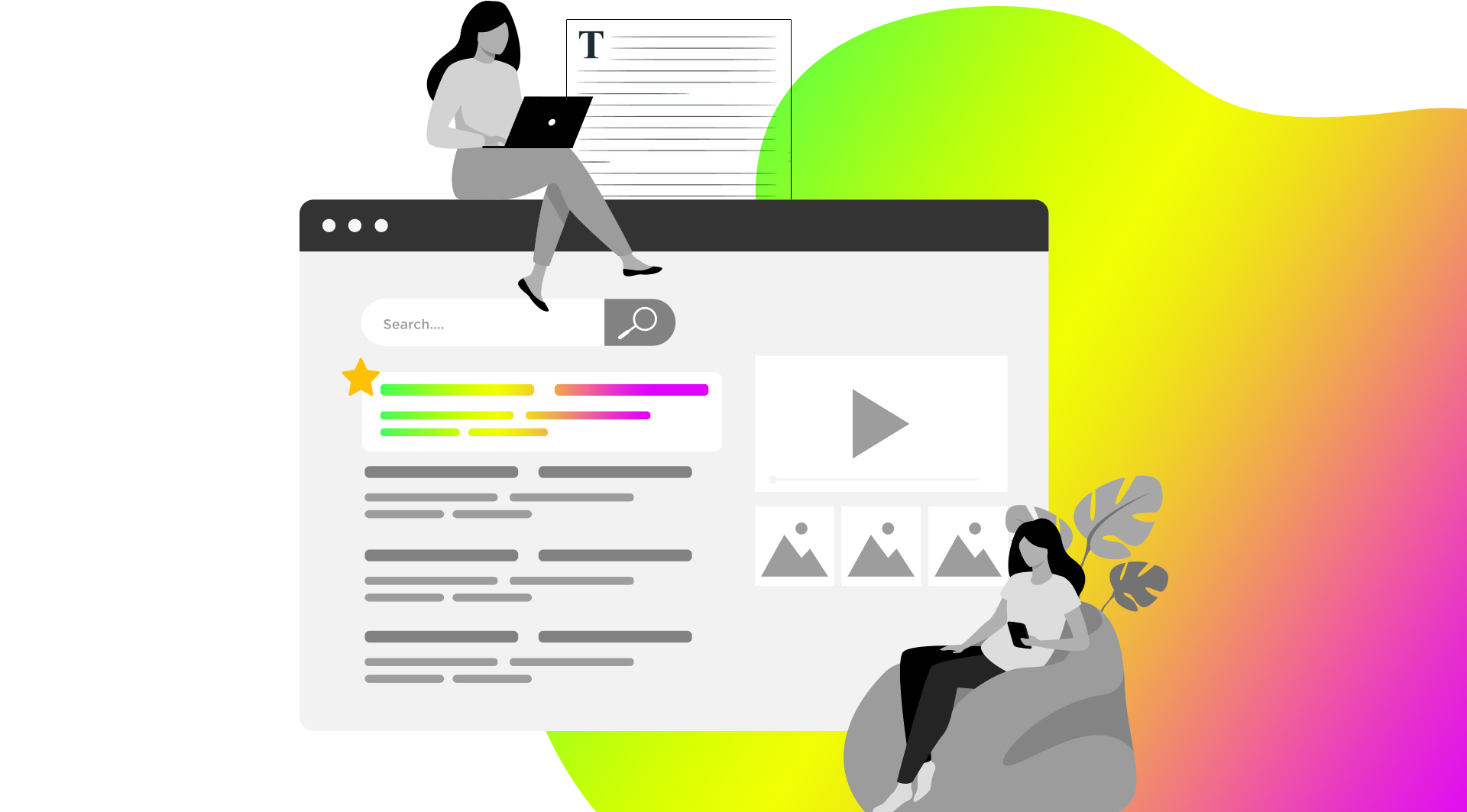Updated August 13, 2024
Contextual linking is a hyperlink in a piece of text that indicates to search engines and users that there is other relevant content on the other side of the link.
A contextual link strategy can be used both internally and externally and helps Google rank your content.
Let’s take a deep dive into what contextual linking is and how to include contextual link building as part of your SEO content writing strategy.
The Difference Between Internal and External Contextual Links
Let’s start with the basics: what’s the difference between internal and external contextual links?
What are Internal Contextual Links?
Using contextual links is a key part of a content cluster strategy. Contextual links create a “map” that allows search engines and users to more easily navigate your site.
For example, in the paragraph above, there’s a hyperlink to “cluster content” which will take you to a page that goes in-depth on what cluster content is and how to create your content clusters. This shows Google, Bing, and other search giants that this website contains even more useful and relevent information for users.
For search engines, your internal contextual links indicate that your site is a wealth of information on a topic, and for users, this helps them find the content they’re looking for.
Your content needs to be created for user intent and easy for web crawlers to find. Search engines want to see you do both.
What are External Contextual Links?
A link that points to related content on a site outside of your own is an external contextual link. When you link to external content, search engines make a connection between your content and the external site’s content. This shows search engines that your sites are “related,” and that you’re giving your users even more relevant information.
This is why it’s extremely important to only link to high quality external content.
High-quality content typically links to other high-quality content. If you want Google to consider your content high-quality, you want your website to only be associated with high-value external sites.
You know the old adage that you’re judged by the company you keep? That’s exactly how search engines look at your external contextual links.
How to Get Contextual Backlinks to Your Site
Contextual links are important for helping search engines crawl your site, but having high-quality contextual links pointing to your site is equally important.
The more high-quality contextual links back to your site, the better your rankings.
Let’s look at how you can get contextual backlinks to your site.
Write Rock-Solid Content
First, you need to make sure that the content you’re pointing to is of excellent quality.
Backlinking should be mutually beneficial for both you and the site linking to you.
Sites won’t want to link to you if your content isn’t top-quality.
Before you ask external sites for backlinks, make sure that your content is solid. That means clear, cohesive content that’s useful, written for user intent, structured for readability, and accurate.
Writing rock-solid content also includes incorporating infographics where appropriate, tables, videos, and any other supporting visuals that add value to your content.
In short: make your content worth linking to.
And if your content is really, really good, you won’t have to ask for backlinks–they’ll just happen.
Find Other Relevant Content
Links from external sources pointing at your website are inbound links. The link coming from relevant content is what makes it contextual.
Contextual link building is the only type of external links you should aim for.
And here are a couple reasons why:
- Search engines are better able to determine what your site is about if your external links come from similar websites.
- Links that are non-contextual are low-quality links and are considered “spammy.” Trying to get backlinks just for the sake of getting backlinks won’t do you any favors. In fact, it can be detrimental to your site rankings.
So when you’re looking to build your inbound links, go contextual.
And if you’ve ever engaged in any shady link building practices, it’s time to disavow those links to help remove any penalties you might have been given by Google.
Write a Thought Leadership Guest Article
Writing guest articles is a form of digital PR that can be mutually beneficial for you as well as the sites linking to you.
Writing a thought leadership article helps establish your credibility within your niche and gives you a link back to your website (given that the site allows do-follow links) and provides a piece of high-quality content for the external site.
For example, here’s a contextual link in a byline I wrote for Crowdfire on streamlining content creation. The link in my byline is a contextual link that points back to the Amplihigher site.
Stay Within Your Industry
Getting contextual backlinks from sites within your industry make it easier for search engines to classify your website, as well as give users the most relevant information possible.
Whether you’re writing a thought leadership piece or reaching out to a publication to ask for a backlink from one of their articles, staying in line with your industry is key.
And even though you want to stay within your industry, you’re not necessarily limited to your specific niche.
For example, let’s say I want to write a byline article that links back to the Amplihigher site. Just because Amplihigher is a copywriting services and content agency doesn’t mean I’m limited to bylines on only copywriting-related websites. I can also look for sites that focus on advertising, sales, or social media because these all fit under the same industry umbrella: marketing.
Establishing Authority With Contextual Link Building
Contextual link building is one of the most needle-moving things you can do in your SEO content strategy. With bulletproof content and a strategy for internal and external contextual link building, you’ll start to see your content rank.






